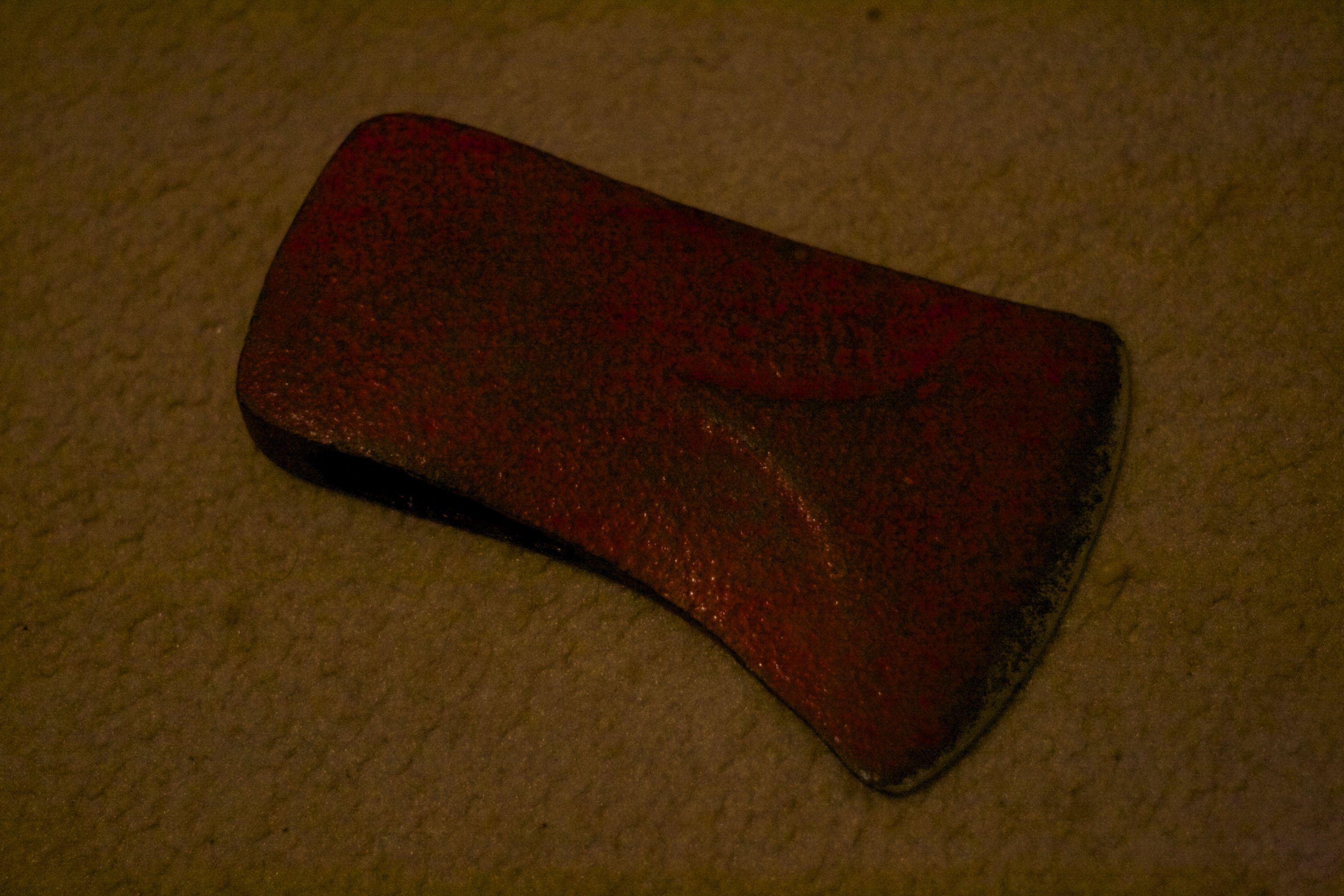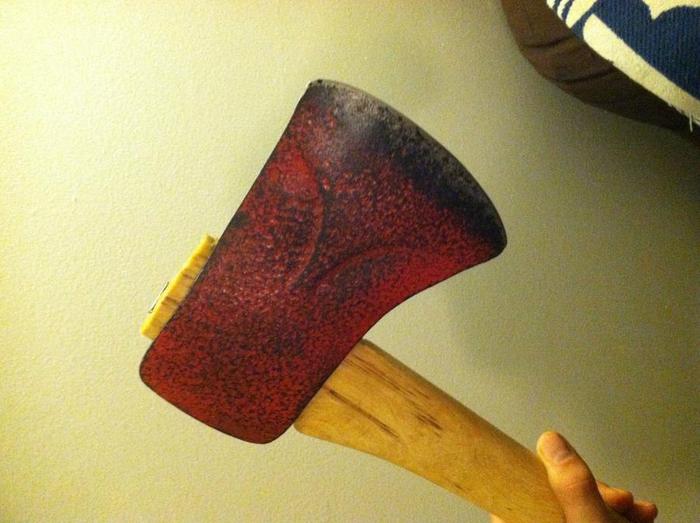Got this today. cleaned it up a bit. It was painted by the previous owners
I hope I can rehang it. It is pretty rusted on the inside, and thinning on one side at the top. Anyone know how messed up an axe head has to be to be unsafe to rehang? It seemed pretty solid in the original handle, but it seemed like it had been epoxied as well...
I figure this is a Kelly axe, but there's not a marking on it. Seems like pretty hard steel, it was a real pain to sharpen.
Thanks a lot!!!


I hope I can rehang it. It is pretty rusted on the inside, and thinning on one side at the top. Anyone know how messed up an axe head has to be to be unsafe to rehang? It seemed pretty solid in the original handle, but it seemed like it had been epoxied as well...
I figure this is a Kelly axe, but there's not a marking on it. Seems like pretty hard steel, it was a real pain to sharpen.
Thanks a lot!!!




